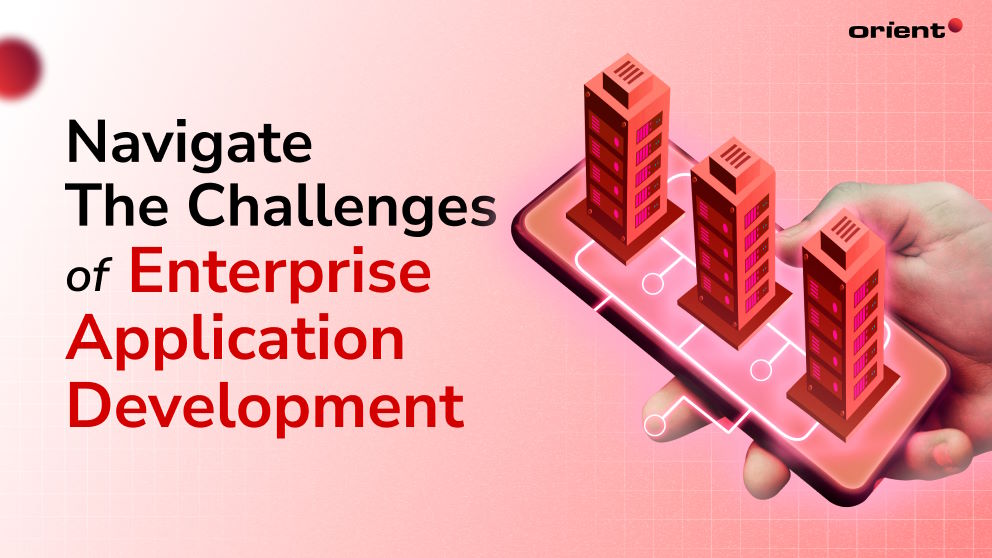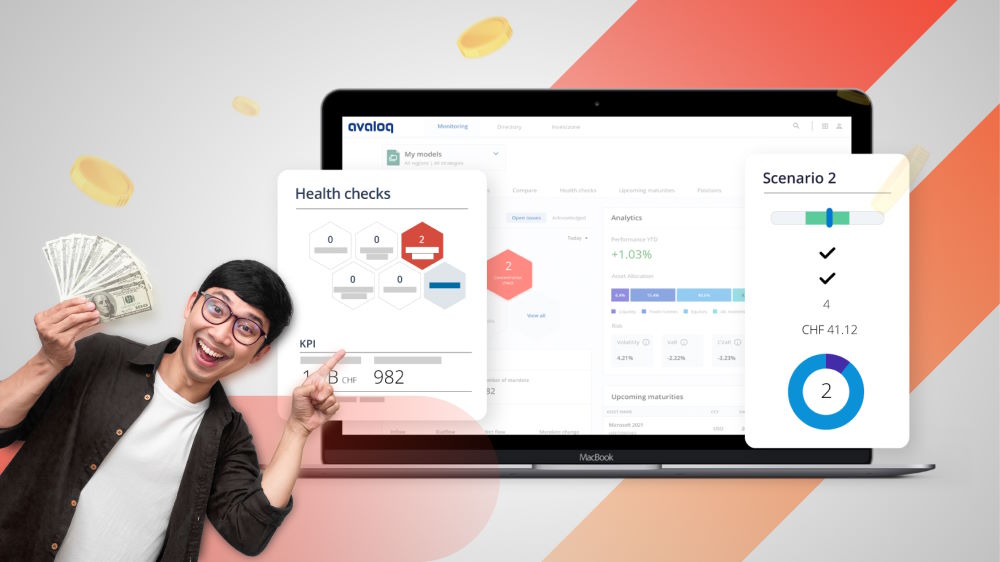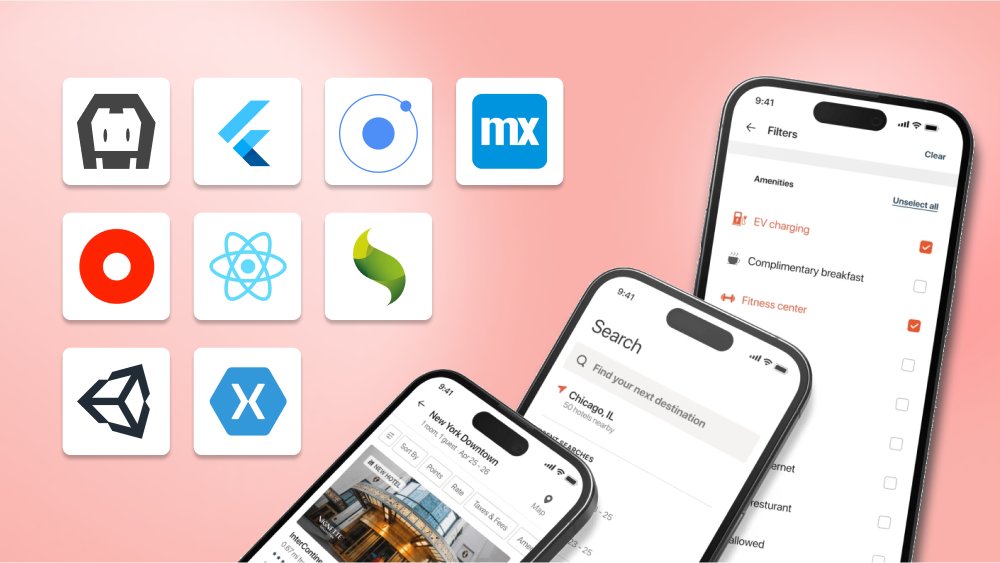How to Successfully Navigate the Challenges of Enterprise Application Development

Content Map
More chaptersDeveloping applications for large enterprises comes with a unique set of challenges. Unlike consumer apps targeting broad public audiences, enterprise software development needs to integrate tightly with existing systems, meet corporate IT policies, and satisfy both end users and stakeholders. Juggling these many complex requirements is no easy task.
With so many constraints and considerations in play, many pitfalls can ensnare the enterprise application development team if not properly planned for. Budget overruns, missed deadlines, security gaps, and issues with user adoption are common.
In this guide, we’ll share insider strategies and best practices for overcoming the multifaceted challenges of enterprise application development.
What is Enterprise Application Development?
Enterprise application development (EAD) is the process of designing, developing, deploying, and maintaining software applications for large organizations. EAD projects are often complex and involve multiple teams and stakeholders. They may also need to integrate with existing systems and data sources.
EAD applications are typically used to support core business processes, including supply chain management (SCM), enterprise resource planning (ERP), and customer relationship management (CRM). They may also be used to develop new products and services or to improve the efficiency and effectiveness of existing operations.
By following these best practices, organizations can increase their opportunities for success with EAD projects and deliver applications that meet their business requirements.
Here are some examples of enterprise applications:
- Human capital management (HCM) systems
- Business intelligence (BI) systems
- E-commerce platforms
- Learning management systems (LMS)
- Healthcare information systems
- Financial management systems
EAD is a critical function for many organizations, and it is important to invest in the resources and expertise necessary to deliver successful projects.
Common Challenges in Enterprise Application Development
Enterprise application development is a complicated process that involves various stages, from conceptualization to deployment. During this process, the development team often encounters a number of challenges that can hinder the development process. Here are some of the most common challenges in enterprise app development:
Complexity and Scale
Dealing with Large and Diverse Data Sets
Enterprise applications typically handle a vast amount of data from various sources that involve data center costs, network costs, and storage costs. Efficiently managing and processing this data can be a significant challenge. Developers must design robust data models, implement efficient database management systems, and utilize appropriate data storage and retrieval techniques. Additionally, incorporating data analytics capabilities can help organizations derive valuable insights from their data.
Integrating with Existing Systems and Legacy Applications
Enterprises usually have a myriad of existing systems and legacy applications that are critical to their operations. Integrating a new enterprise application with these systems poses challenges such as disparate data formats, incompatible technologies, and differing business processes. It requires careful planning, well-defined integration strategies, and the use of integration technologies such as APIs, middleware, or enterprise service buses (ESBs). Smooth integration ensures seamless data flow and fosters interoperability between the new and existing systems.
Security and Compliance
Protecting Sensitive Data and Ensuring Data Privacy
Enterprise apps often handle sensitive information, including customer data, financial records, and intellectual property. Safeguarding this data from unauthorized access, breaches, and malicious activities is of paramount importance.
Robust security measures such as access controls, encryption, and secure authentication protocols must be implemented to protect sensitive data at rest and in transit. Additionally, incorporating data privacy principles, such as data minimization and user consent, helps ensure compliance with privacy regulations like GDPR and CCPA.
Meeting Regulatory Requirements and Industry Standards
Depending on the industry they operate in, enterprise apps are subject to different legal regulations and industry standards. Compliance with regulations such as HIPAA for healthcare, PCI DSS for payment processing, or SOX for financial data is crucial. Organizations must ensure that their applications adhere to these standards and implement the necessary controls and safeguards. This includes conducting regular security audits, penetration testing, and vulnerability assessments to identify and address any weaknesses or vulnerabilities.
User Experience and Adoption
Balancing Functionality with Usability
Enterprise applications are often feature-rich, catering to complex business processes. However, it is essential to ensure that the functionality does not come at the expense of usability. A well-designed user interface (UI), intuitive navigation, and streamlined workflows contribute to a positive user experience. Conducting user research, usability testing, and incorporating user feedback throughout the development process helps in optimizing the application’s usability and ensuring that it aligns with the needs and expectations of the users.
Overcoming Resistance to Change and Promoting User Adoption
Introducing a new enterprise application can face resistance from employees accustomed to existing systems or processes. In order to encourage user adoption, effective change management strategies should be employed. This includes transparent communication about the benefits of the new application, providing training and support, and involving end-users in the development and decision-making process. Demonstrating the value and ease of use of the application through pilot programs or phased rollouts can help alleviate resistance and encourage user adoption.
Scalability and Performance
Designing for High Availability and Scalability
Over time, expectations and user traffic will expand, and enterprise systems must be built to accommodate these changes. High availability ensures that the application remains operational and accessible even in the event of hardware failures or network disruptions. Scalability involves the ability to accommodate increased workloads and user concurrency without compromising performance. This requires careful architectural planning, such as implementing distributed systems, load balancing mechanisms, and horizontal scaling techniques, to ensure that the application can scale seamlessly as the user base and data volume expand.
Optimizing Performance for Large User Bases and Heavy Workloads
An enterprise app often faces the challenge of handling large user bases and processing heavy workloads. Performance optimization plays a crucial role in ensuring smooth and efficient operations. This involves fine-tuning database queries, optimizing algorithms, and utilizing caching mechanisms to reduce response times. Additionally, leveraging technologies such as in-memory computing, asynchronous processing, and content delivery networks (CDNs) can help improve performance by reducing latency and optimizing data delivery.
Strategies for Overcoming Enterprise Application Development Challenges
Enterprise application development comes with its fair share of challenges, but with the right approaches, these challenges can be effectively addressed. Here are some strategies for overcoming the common challenges associated with enterprise application development:
Comprehensive Planning and Requirements Gathering
Thoroughly Analyzing Business Needs and User Requirements
Before embarking on the enterprise application development journey, it is vital to conduct a thorough data analysis of the organization’s business needs and understand the specific requirements of the end users. This involves engaging with stakeholders, conducting interviews, and gathering feedback to gain insights into their workflows, pain points, and desired outcomes. By understanding the unique challenges and objectives of the organization, development teams can tailor the application to address these needs effectively.
Additionally, employing techniques such as user personas, user stories, and use case analysis helps in creating a clear picture of user requirements and expectations. Collaborating closely with business analysts, domain experts, and end-users during this phase enables a comprehensive understanding of the application’s purpose and functionality.
Creating a Solid Roadmap with Clear Milestones and Deliverables
Once the requirements have been gathered, it is crucial to create a solid roadmap that outlines the development process. This roadmap should include clear milestones and deliverables, providing a structured framework for the development team to follow. Breaking down the development process into manageable phases allows for better project management, resource allocation, and tracking of progress.
Setting realistic timelines and milestones helps in managing expectations and ensuring that the development process stays on track. Regular communication and collaboration between stakeholders and the development team are essential to address any challenges or changes that may arise during the development process.
Moreover, incorporating agile methodologies, such as Scrum or Kanban, can enhance the planning and development process by enabling iterative development, continuous feedback, and flexibility to adapt to evolving requirements.
Robust Architecture and Technology Selection
Choosing Scalable and Flexible Technologies and Frameworks
Selecting the right technologies and frameworks is a critical decision that impacts the scalability and flexibility of an enterprise application. It is essential to choose a scalable and flexible architecture that can handle growing user demands and accommodate future expansion. Scalable technologies, such as cloud computing platforms and distributed systems, provide the infrastructure required to support increasing workloads and user concurrency. Additionally, flexible frameworks and libraries enable developers to adapt and extend the application’s functionality as business requirements evolve.
Designing Modular and Extensible Architectures
Designing modular and extensible architectures allows for flexibility and ease of maintenance and upgrades. A modular architecture breaks down the application into smaller, independent components, enabling easier development, testing, and deployment. This modular approach also facilitates scalability, as specific components can be scaled independently based on demand.
Furthermore, extensible architectures allow for the addition of new functionality and integration with external systems without disrupting the existing application. This promotes agility and adaptability, enabling the application to evolve alongside changing business needs and technological advancements.
Adopting architectural patterns such as microservices, which decouple application components into independently deployable services, can enhance modularity and extensibility. Applying design principles like separation of concerns, loose coupling, and API-driven development further supports the creation of a robust and flexible architecture.
Embracing Security and Compliance Best Practices
Implementing Strong Authentication and Encryption Mechanisms
Robust authentication mechanisms are essential to secure enterprise applications from unauthorized access. Implementing multi-factor authentication, strong password policies, and secure identity management systems helps ensure that only authorized users can access sensitive information.
Encryption plays a vital role in protecting data both at rest and in transit. Utilizing encryption algorithms and protocols, such as SSL/TLS, helps secure data transmissions between users and the application’s servers. Employing encryption techniques, such as data encryption at the database level, further enhances the protection of sensitive information.
Additionally, implementing secure coding practices, such as input validation and output encoding, helps prevent common security vulnerabilities, such as SQL injection attacks and cross-site scripting (XSS). Regularly patching and updating software components and libraries also mitigates the risk of known security vulnerabilities.
Conducting Regular Security Audits and Staying Updated with Regulations
Conducting regular security audits is essential to identify and address potential vulnerabilities and security gaps in the application. Penetration testing, vulnerability assessments, and code reviews help identify weaknesses and ensure that appropriate security measures are in place.
Staying updated with regulations and compliance standards is crucial for enterprise applications, particularly in industries with particular data protection requirements, such as healthcare or finance. Regularly monitoring and understanding changes to regulations, such as GDPR or PCI DSS, helps organizations ensure that their applications comply with legal and industry-specific requirements.
Maintaining a proactive approach to security by staying informed about emerging threats, security best practices, and industry-recognized security frameworks, such as the OWASP Top Ten, helps organizations proactively address security vulnerabilities and protect sensitive data.
Final Suggestions
Overcoming challenges in enterprise application development requires leveraging proven strategies and best practices. Adopting agile development methodologies, such as Scrum or Kanban, facilitates iterative development, continuous feedback, and flexibility to adapt to changing requirements. Utilizing DevOps practices, such as continuous integration and continuous deployment (CI/CD), streamlines the development process and ensures efficient collaboration between development, operations, and quality assurance teams.
Partnering with a reliable software outsourcing development company, such as Orient Software, can provide expertise and support in enterprise application development. Their experience in building scalable and high-performing applications can help organizations navigate challenges and achieve their development goals. Choosing a reputable software development partner like Orient Software can further enhance the success of the enterprise application development journey.







